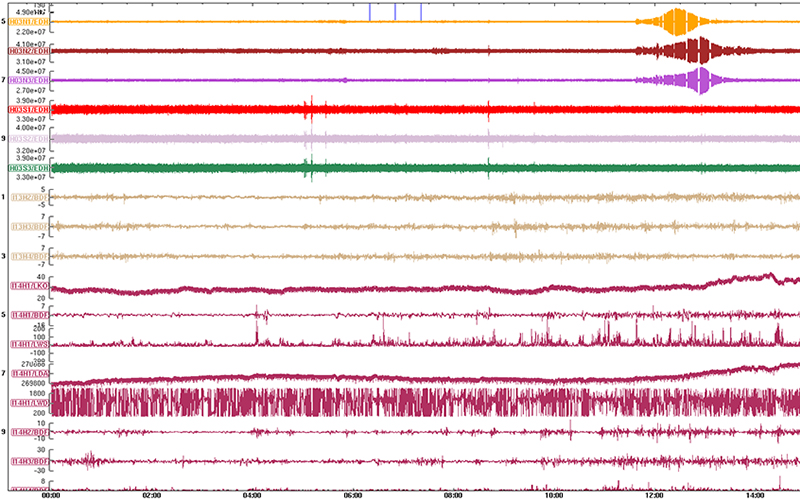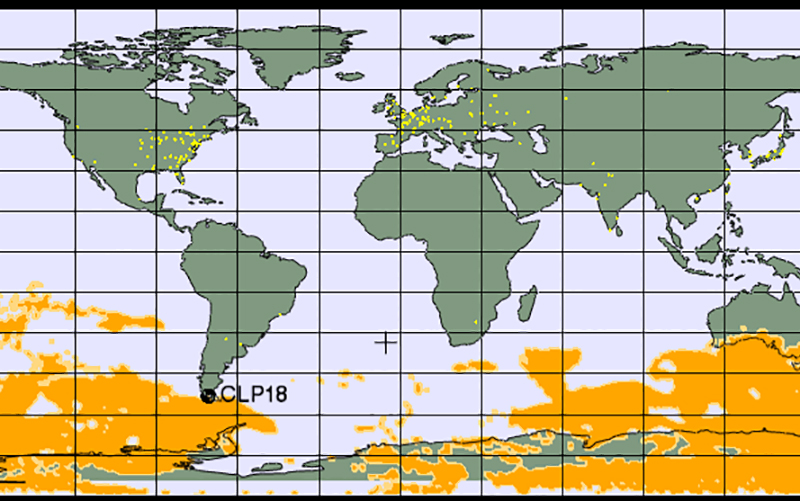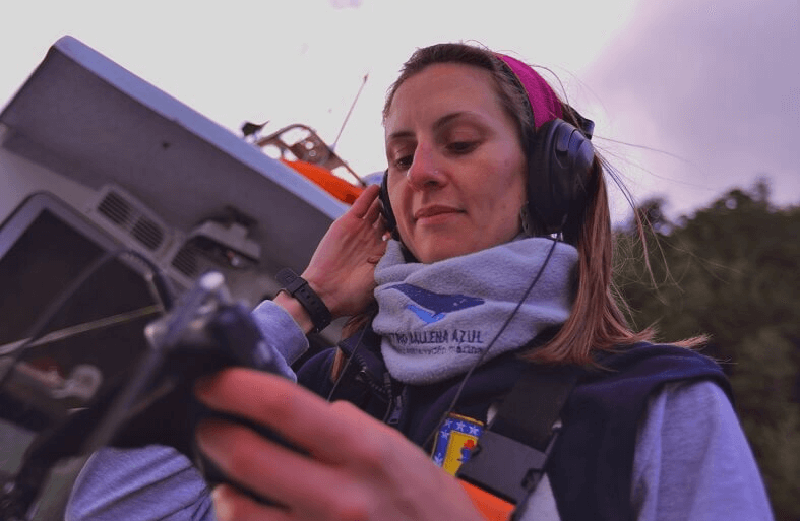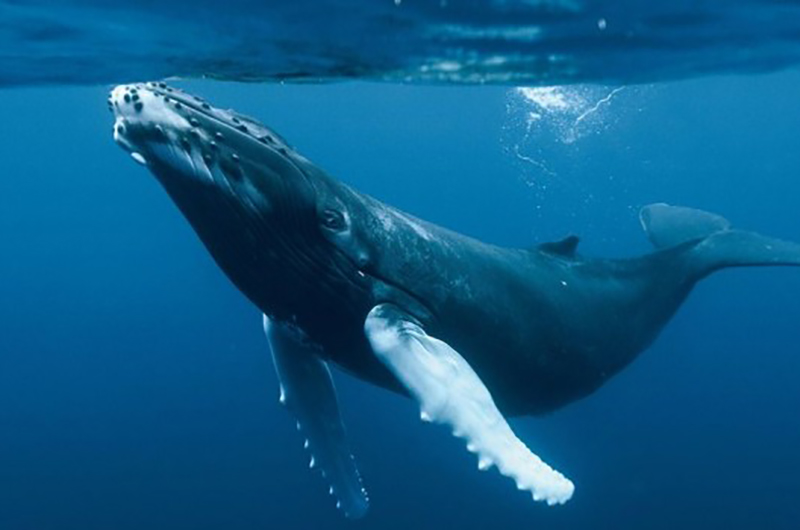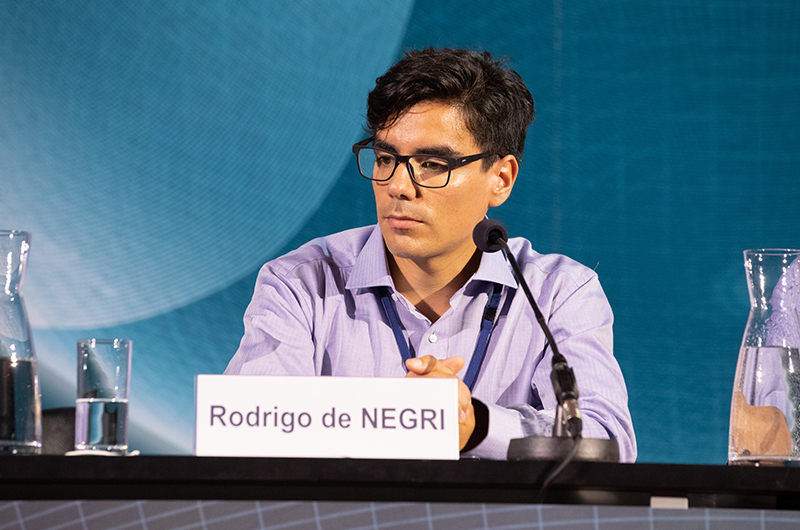Scientific Impulse Program
Over the years, scientists from around the world have turned to the CTBT National Data Centers to use the information obtained for their research. This is because the technology used for monitoring, within the framework of the Comprehensive Nuclear-Test-Ban Treaty (CTBT), generates various products that not only serve its main purpose, detecting nuclear explosions, but also the data from the monitoring stations have the potential to be used to complement scientific research, not necessarily related to nuclear testing. From this arises the need to have in Chile a Program that disseminates this information at a national level. In fact, some researchers from national universities have already used data from our National Data Center in their projects, obtaining results that have demonstrated the usefulness of these technologies in an academic context.
Objective
Develop data processing capabilities to promote its use in scientific research within Chile and thus, position our NDC as a reference within the Latin American and Caribbean region (LAC) for its contribution to Chilean institutions, both public and private, that require its products for the development of research projects. The Program contemplates informing, providing and receiving feedback from the reading of the data detected in our NDC at a national level to universities, technological institutes, public emergency institutions, etc. Besides leading international research on these matters.
What does the International Monitoring System (IMS) include?
The IMS has 337 facilities; 321 stations and 16 laboratoriesthroughout the world, of 4 different technologies: radionuclides,seismic, infrasound and hydroacoustic waveforms.
Infrasound: 60 stations that detect pressure changes in the atmosphere. Hydroacoustics: 11 stations that detect the waves propagated in the oceans. Seismic: 50 primary and 120 auxiliary stations that detect the waves propagated on land. Radionuclides: 40 particle stations and 40 noble gas stations that prove that the movements detected by the wave technology correspond to a nuclear event.
What research has been done based on data from CTBT monitoring stations in Chile?
Hydroacoustic data
Between 2007 and 2016, Susannah Buchan, PhD in Oceanography from the COPAS Sur-Austral Center of the Universidad de Concepción and the Center for Advanced Studies in Arid Zones, has requested data from the Juan Fernández hydroacoustic station to complement her research on passive acoustic monitoring of whales.This information has contributed to the understanding of the distribution and conservation of different endangered whale species of the Southeast Pacific, particularly: blue whale, fin whale and minke whale. Publications: Buchan, S.J., Balcazar-Cabrera, N.E., Stafford, K. Accepted. Seasonal acoustic presence of blue, fin and minke whales off the Juan Fernández Archipelago, Chile (2007-2016). Accepted for publication in Marine Biodiversity. Buchan S.J., Gutierrez L., Balcazar-Cabrera N., Stafford K.M. 2019. Seasonal occurrence of fin whale song off Juan Fernandez, Chile. Endangered Species Research, 39: 135-145. DOI: 10.3354/esr00956
Infrasonic data
Rodrigo de Negri, Master in Earth Sciences from the Universidad Nacional Autónoma de Mexico (UNAM) and current PhD student in Geophysics at the University of California, Santa Bárbara (USA) has requested data from CCHEN's TPCE National Data Center to present his research at two CTBTO Science and Technology Conferences (2015 and 2017): • Using data from Chilean infrasound stations to analyze seismic and volcanic activity in Chile (2017). • Calculation of "Look-up" tables with empirical climatologies for the detection, localization, and long-range characterization of infrasound generated by volcanic eruptions (2019) Rodrigo points out the following: "The use of data from the monitoring stations of Infrasound of the TPCE-Chile National Data Center; IS13 (Rapa Nui, Easter Island) and IS14 (Juan Fernández) are very useful for our research, as long-range infrasound has been effective in detection, location and characterization of moderate to large eruptions. For this reason, has been used for monitoring systems of volcanic activity. In addition, using infrasound it has been possible to reverse the seismic source of earthquakes, observe diffraction in mountains and generation of infrasound by Tsunamis. The project we are carrying out is focused on the exploitation scientific data from infrasound at different distances for the study of earthquakes and volcanic activity. We also intend to develop a methodology for the processing and analysis of this type of data for studies of infrasound sources in the Andean context. To achieve this, we will use of data from Chilean CTBT stations to investigate the signal/noise level of the infrasound data for time series that understand the phase before, during and after seismic events and volcanic eruptions of significant magnitude".

